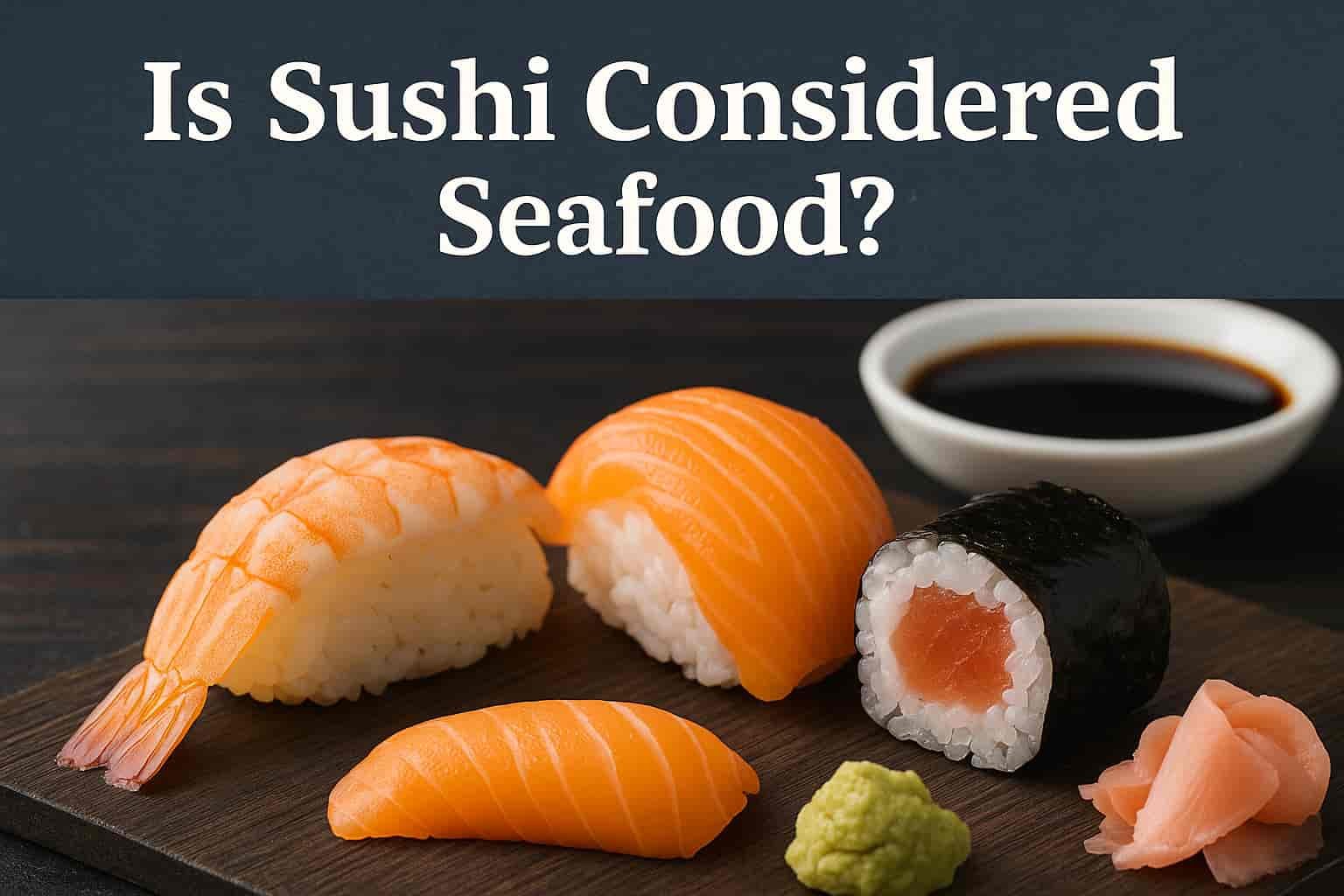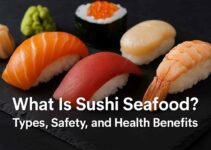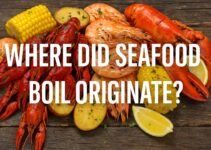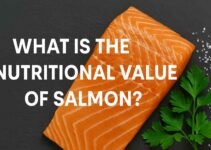Sushi has become one of the most recognized dishes worldwide, celebrated for its delicate flavors and artistic presentation. While its popularity continues to grow, a common question arises: Is sushi considered seafood? This question often leads to confusion, as sushi is frequently associated with raw fish and other marine ingredients. However, understanding what truly defines sushi requires exploring its cultural origins, ingredient variations, and modern interpretations.
In this article, you will receive a definitive answer backed by clear facts. We will explain the traditional meaning of sushi, identify which types involve seafood, and clarify how it is classified in both culinary and nutritional contexts. Whether you’re concerned about dietary restrictions, allergies, or simply curious, this guide provides precise, actionable insights.
For a more detailed guide on sushi and seafood combinations, visit our Sushi Seafood Guide.
Contents
What Is the Exact Definition of Sushi?
Sushi is defined by its use of vinegared rice, not by its inclusion of seafood. The Japanese term “sushi” directly refers to seasoned rice prepared with vinegar, sugar, and salt. This rice serves as the foundation for various sushi dishes, whether or not they contain fish or seafood.
There are three core components of traditional sushi:
- Sushi rice (shari)
- Nori (seaweed) or soy wrappers
- Fillings or toppings, which can include vegetables, eggs, or seafood
For example, Tamago sushi features sweetened egg omelet, and Kappa maki includes cucumber—both contain no seafood. These variations prove that sushi is a preparation method centered around rice, not an automatic classification of seafood dishes.
Does Sushi Always Contain Seafood?
Sushi does not always contain seafood. While many popular varieties feature fish, there are numerous vegetarian and even vegan sushi options widely consumed.
Here are three common seafood-free sushi types:
- Kappa Maki: A simple cucumber roll wrapped in rice and nori.
- Tamago Nigiri: Slices of sweetened Japanese omelet placed over sushi rice.
- Avocado Maki: Rolls filled with ripe avocado, popular in Western cuisine.
These options demonstrate that sushi can be entirely plant-based and still retain its authenticity. The key is the seasoned rice, not the protein source.
Which Types of Sushi Are Made with Seafood?
Five main types of sushi regularly include seafood:
- Nigiri: Hand-pressed rice topped with raw or cooked seafood, such as tuna, salmon, or shrimp.
- Sashimi: Thinly sliced raw seafood served without rice, often featuring high-grade tuna or salmon.
- Maki: Rolls wrapped in seaweed and rice, filled with seafood like crab, shrimp, or eel.
- Temaki: Cone-shaped hand rolls with a combination of seafood and vegetables.
- Chirashi: Bowls of sushi rice topped with assorted raw seafood selections.
The five most commonly used seafood ingredients in sushi are:
- Salmon (sake)
- Tuna (maguro)
- Shrimp (ebi)
- Eel (unagi or anago)
- Octopus (tako)
Each ingredient serves a distinct culinary purpose. For example, tuna is prized for its rich flavor and high protein content, while eel is always served cooked and glazed with sweet soy sauce.
Are Raw and Cooked Seafood Both Used in Sushi?
Both raw and cooked seafood are used in sushi preparations. Traditional Japanese sushi often features raw fish known as sashimi-grade, ensuring it meets strict freshness and safety standards. Common raw seafood includes tuna (maguro), salmon (sake), and yellowtail (hamachi).
However, cooked seafood options are equally popular, especially among those concerned about consuming raw fish. Examples include:
- Unagi (freshwater eel): Always grilled and served with a sweet soy glaze.
- Ebi (shrimp): Typically boiled or grilled before serving.
- Tamago Nigiri: Though not seafood, this is an example of fully cooked sushi toppings using egg.
This variety ensures that people with dietary restrictions or safety concerns can still enjoy sushi without compromising on flavor or experience.
Is Sushi Classified as Seafood in Nutritional Guidelines?
Sushi is classified as seafood only when it contains marine-based ingredients. In nutritional guidelines, food categorization is ingredient-based rather than preparation-method based. If sushi contains fish or shellfish, it contributes to daily seafood intake recommendations, especially regarding omega-3 fatty acids and lean protein sources.
For example:
- A Tuna Nigiri (approx. 40 grams) provides about 8 grams of protein and 150 mg of omega-3 fatty acids.
- A Salmon Sashimi portion (100 grams) offers over 2000 mg of omega-3 fatty acids, aligning with heart health guidelines recommended by organizations like the American Heart Association.
In contrast, vegetarian sushi like Kappa Maki or Avocado Rolls contribute no seafood value and are classified under plant-based or grain-based categories.
Conclusion: The classification depends solely on the ingredients present, not the dish’s culinary style.
Is Sushi Considered Seafood in Cultural Contexts?
In traditional Japanese culture, sushi is closely linked with seafood, but modern interpretations broaden this view. Historically, sushi developed alongside Japan’s coastal communities, where access to fresh fish shaped culinary practices. Dishes like Edomae sushi, originating from Tokyo, specifically feature raw fish atop vinegared rice.
However, with globalization, sushi has evolved beyond its seafood origins. In Western cultures, especially in the United States and Europe, plant-based sushi options have gained significant popularity. Chains now offer rolls featuring avocado, cucumber, pickled radish, and tofu to meet vegetarian and vegan dietary preferences.
While purists in Japan may still associate sushi strongly with seafood, the modern culinary landscape recognizes sushi as a versatile cuisine. Its core identity remains centered on seasoned rice, with the choice of seafood or non-seafood toppings being a personal or cultural variation.
Can People with Seafood Allergies Safely Eat Sushi?
People with seafood allergies can safely eat sushi if they choose seafood-free options and avoid cross-contamination. However, due to the high prevalence of seafood ingredients in sushi restaurants, the risk of accidental exposure remains significant.
To minimize risks, it is essential to select clearly seafood-free options, such as:
- Avocado Maki
- Cucumber Rolls (Kappa Maki)
- Tamago Nigiri (Sweet Egg Omelet)
- Vegetable Tempura Rolls
Despite these safe choices, cross-contact with seafood utensils and preparation surfaces is a critical concern. To reduce this risk, request that chefs use freshly cleaned knives and cutting boards. Some restaurants also offer dedicated vegetarian preparation areas—opt for these whenever possible.
If the allergy is severe, dining at certified vegetarian or vegan sushi establishments is the safest solution. Always inform the restaurant of the allergy in advance to ensure proper precautions are taken.
Final Answer: Is Sushi Considered Seafood or Not?
Sushi is not inherently classified as seafood; it is a culinary style based on vinegared rice. Whether sushi is considered seafood depends entirely on the ingredients used.
- If the sushi includes fish or shellfish—such as Tuna Nigiri or Salmon Maki—it qualifies as seafood.
- If it contains only plant-based or non-seafood ingredients—such as Avocado Rolls or Tamago Nigiri—it does not fall under the seafood category.
In both cultural and nutritional contexts, ingredient composition dictates classification. Sushi offers incredible variety, making it accessible for those who consume seafood and for those who strictly avoid it.



